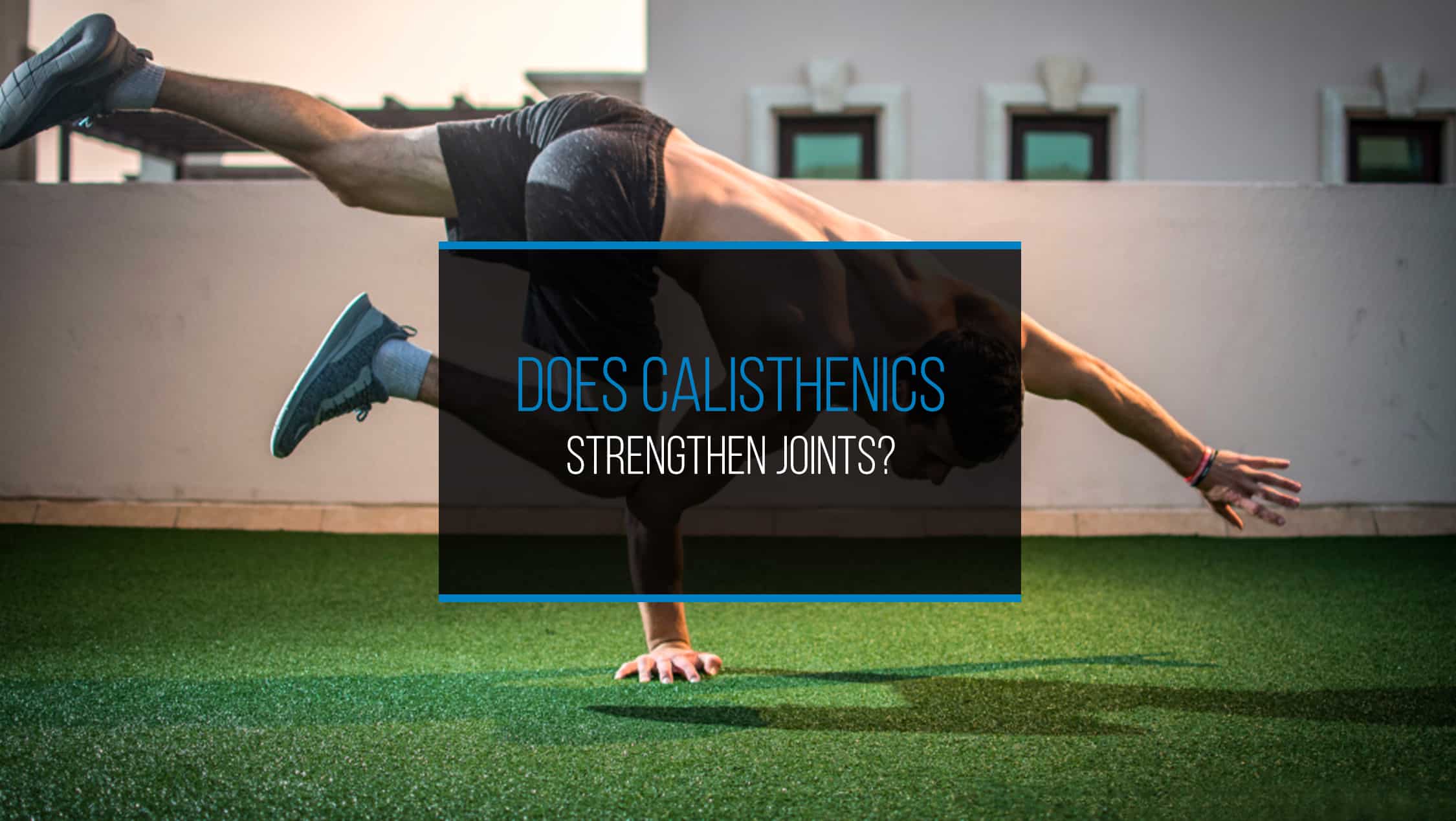If you’re looking for the best workout to strengthen and protect your joints, you might have considered calisthenics because of the range of exercises incorporated into workouts and the benefits to overall muscle strength and flexibility.
But by improving muscle strength, does this also improve joint strength and stability, or should calisthenics be avoided if you’re trying to limit joint impact?
In short, calisthenics incorporates a range of exercises that, if done correctly and regularly, can help to strengthen major muscle groups, which in turn helps to strengthen and maintain healthy joints and connective tissues.
Read on to find out much more about how calisthenics can improve joint strength, which are the best calisthenic exercises for strengthening joints, and how to avoid potential joint problems.
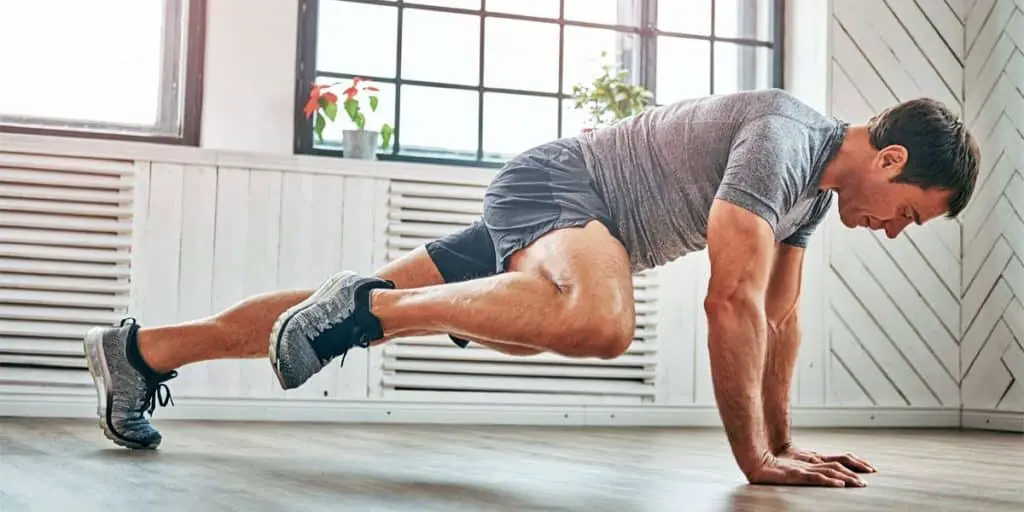
An Overview of Calisthenics
To understand how calisthenics can help to strengthen joints, it helps to know the principles of the exercise.
Calisthenics works by performing a range of exercises that mainly use body weight as resistance (although, in some cases, simple items of equipment such as pull-up bars may be used).
Using a range of different exercises that each target different body areas, you get a full-body workout rather than targeting one specific area such as the core, arms, or legs.
The main focus of calisthenics exercises is to help strengthen various muscle groups, as well as improving endurance, flexibility, and coordination.
How Does Calisthenics Help to Strengthen Joints?
Strengthening exercises such as calisthenics that use body weight as resistance to build muscle strength are proven to help strengthen joints and the connective tissues around the joints.
Medical experts agree that by increasing muscle strength around the joint, you can, in time, protect and strengthen the joint as well as improving joint health.
This article by the Arthritis Foundation also reports on how exercise (such as calisthenics) actually increases lubricating fluids, blood flow, and nutrients around the joint, as well as assisting with the removal of dead cells.
Calisthenics is considered a low-resistance exercise, which puts less impact on the joints compared to high-resistance exercise, where heavy weights are often used to build strength.
Bodybuilding with heavy weights can put more pressure on joints and sometimes cause issues later on.
Some forms of calisthenics use higher resistance, where objects such as bars or boxes are used to make an exercise more difficult. These can put more pressure on the joint, but if this is something you’re concerned about, plenty of calisthenics moves produce excellent results using less resistance.
You might also see conflicting messages that calisthenic exercises can harm joints in the long run, but as with any exercise, only if it’s not done correctly, overdone, or done without proper stretches (before and after), can lead to joint-related issues.
If calisthenics is performed regularly, this can help to increase and maintain joint strength. If done correctly, it can even help prevent joint problems and reduce the risk of injury.
The key is choosing the right kind of calisthenics exercises for your body and ability so you can work on strengthening the joint without causing harm in the long run.
Being sensible by starting slowly to build strength is the best way to tackle calisthenics for long-term joint and muscle strength.
Which Calisthenics Exercises are Best for Strengthening Joints?
We’ll now take you through some of the best calisthenics exercises for strengthening joints using body weight as resistance. These exercises are relatively low impact and promote joint health and strength without harm.
The calisthenics exercises below can be performed at any level, and to make the workout a little more challenging, you can increase complexity and repetitions over time.

- Push-Ups
Push-ups are one of the most-used exercises in calisthenics workouts. They are often made more exciting and a little more difficult by adding extra height using additional equipment such as parallette bars.
If you’re a beginner, it’s a good idea to start with simple push-ups to build strength in your arms, shoulder muscles, and joints before moving onto more strenuous kinds of push-ups.
As well as strengthening many muscle groups (such as those in the upper back, shoulders, triceps, biceps and chest muscles) over time, push-ups can help improve joint strength in the shoulders, wrists, and elbows.
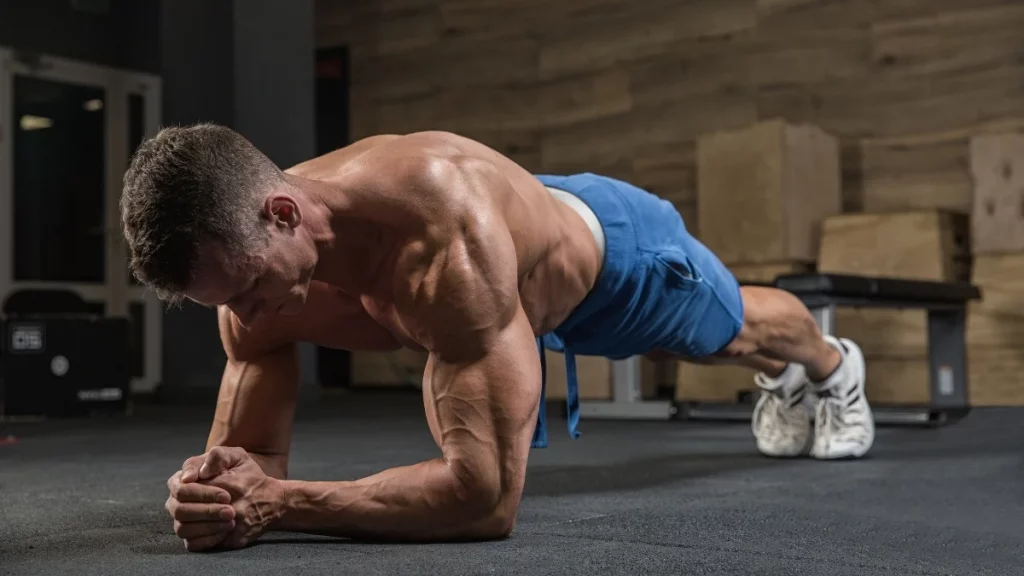
- The Plank
In recent years, the plank has become more and more popular, and like calisthenics, they are used in other forms of exercise such as yoga and Pilates.
The plank improves muscle strength in various body parts, but the main benefit is core strength, which helps improve posture.
It’s been proven that performing the plank regularly builds up core strength, and this, in turn, promotes joint strength and stability in the hips and lower back. This strength can help reduce the risk of injury through exercise and can also help to prevent lower back pain.
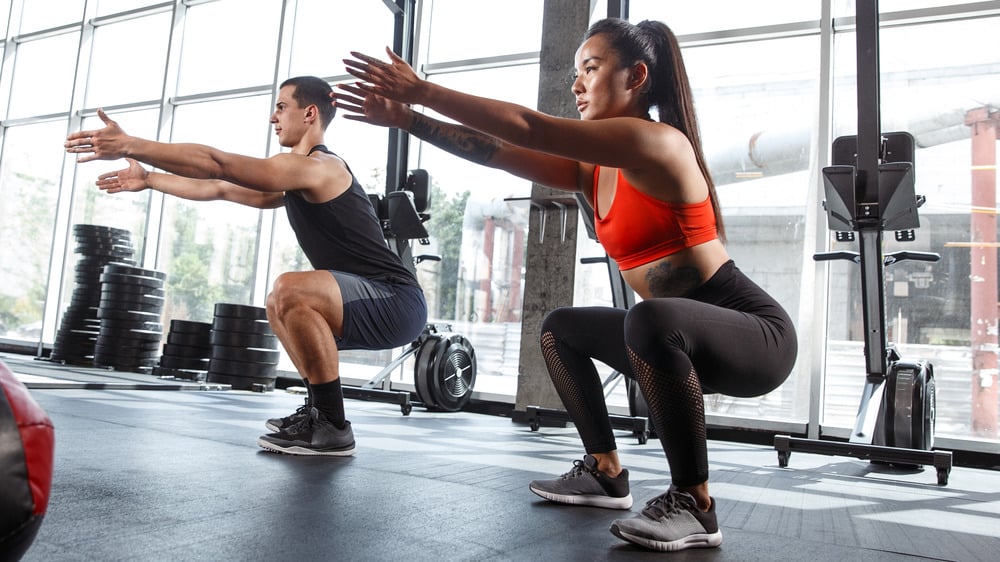
- Squats
Squats are a low-impact, highly-beneficial exercise often incorporated into calisthenics workouts.
In the past, squats have had a reputation for being bad for joints, especially the knees, but problems will only arise if they’re not done correctly.
Squats strengthen muscles in the legs and core, and if performed regularly, this muscle strength leads to increased stability and stronger joints. The main joints that are improved by squats are the hips and knees, but they can also help to strengthen the lower back and spine and reduce the risk of injury to this area.
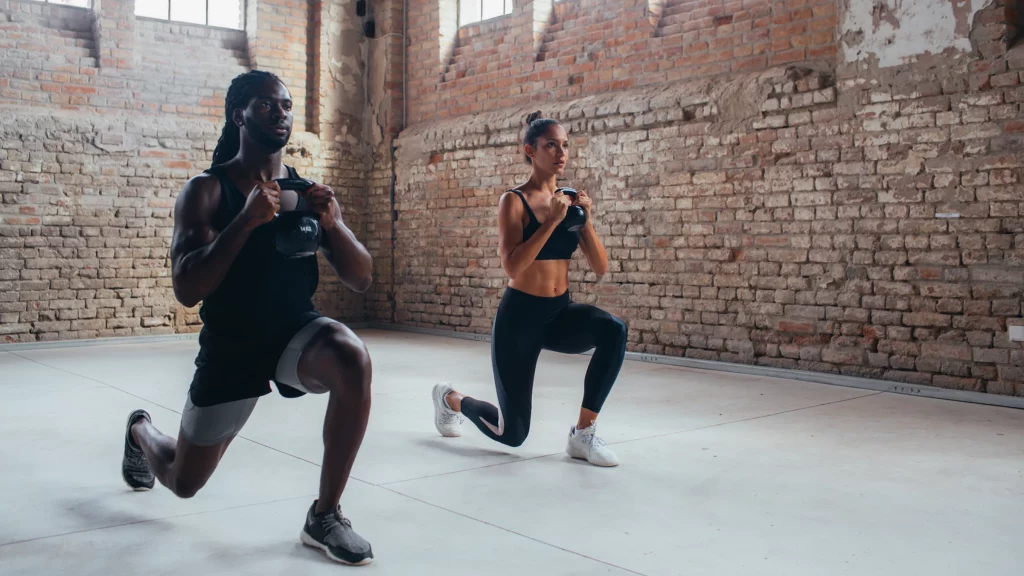
- Lunges
Various kinds of lunges, such as side or walking lunges, are commonly used in calisthenics workouts and use body weight to build strength in the lower body, especially the legs and core.
Those who perform lunges regularly will see improvements in balance, stability, and posture. Improvements to muscle strength by using lunges in a calisthenics routine promote stronger, healthier joints — particularly the hips and knees.
Lunges are also good for strengthening the lower back and spine and can help to prevent potential injury caused by exercise.
- Burpees
Burpees are another example of an exercise commonly used in calisthenics and are an excellent choice for building strength because they improve major muscle groups throughout the body.
There are various ways to perform a burpee, with the traditional burpee method being a push-up that leads straight into a jump squat. If you prefer to keep your exercises low impact, you can do them without jumps. Burpees can also be made more difficult by using equipment to increase the height of the push-up element of the exercise.
Burpees improve muscle strength in the core, legs, buttocks, arms, chest, and shoulders. This improved muscle strength can help strengthen and protect a range of joints, including the knees, ankles, hips, elbows, and shoulders.
- Pull-Ups
Pull-ups are often used in calisthenic training, particularly in gyms where the equipment is regularly available.
Although some might say pull-ups put more strain on joints, if done carefully, they can actually lead to improvement in joint strength.
Starting with slow and controlled pull-ups helps to build muscle strength in the arms, chest, upper back, and hands.
Over time this muscle strength can help protect joints and increase their strength. Pull-ups can strengthen joints and connective tissues in the shoulders, elbows, and hands.
Warming Up to Prevent Injury
One of the most essential factors of maintaining healthy, strong joints when you perform calisthenics is ensuring you warm up and down properly before and after a workout.
Aside from protecting joints, a proper warm-up helps improve flexibility and motion range during the workout and prevents the risk of injury during exercise and potential muscle pain afterward.
There are various styles of warm-up exercises, and there is often varying opinions on which should be used alongside calisthenics.
Some calisthenic experts recommend a combination of warm-up styles to ensure maximum flexibility and protection of the joints while reducing the risk of potential injury.
A dynamic warm-up is one of the most popular ways to warm up before calisthenics.
A dynamic warm-up uses a series of stretches and movements similar to those which will be used in the workout itself. To reduce the risk of pain and injury, these warm-up exercises should focus on the joints and major muscle groups targeted during the calisthenics workout.
In addition to dynamic stretches, mobility drills are regularly used to loosen up muscles in a pre-calisthenics warm-up. They’re good for focusing on problem areas and help avoid potential injury.
Below are just some examples of warm-up exercises that can be used before a calisthenics workout:
- Circular movements in the shoulders and wrists
- Push-ups
- Plank
- Leg lifts
- Reaches – forward and side
- Lunges – forward and side
- Squats
- Jumping jacks
The warm-up exercises you choose are up to you, but as a rule, you need to make sure you use a combination of moves that will warm up the joints and muscles throughout the body.

Post-Calisthenics Stretches
Stretches after a calisthenics workout are also essential to protect the joints, surrounding muscles, and connective tissues.
Static style stretches are often used post-workout, to help improve flexibility and the range of motion while helping to prevent pain and stiffness.
A static stretch is where a stretch is held for a period of time. An example of this is a core stretch, which involves lying face down and lifting the top of your body off the ground using your arms while leaving the legs flat on the floor.
Certain yoga and Pilates movements are excellent for post-calisthenics stretches and are now increasingly incorporated into workouts.
Allow for Rest Between Workouts
Calisthenics exercises are a great way to increase muscle and joint strength, but rest in between workouts is essential too.
Although it can be tempting to exercise this way every day, it’s recommended that you allow 48 hours of rest between calisthenics workouts to protect the muscles.
Using the 48-hour rule means you can sensibly perform two-three calisthenics workouts per week to build strength with less risk of injury or pain by overdoing things.
Taking care of the muscles, in turn, protects the joints and connective tissues because healthy, strong muscles help to protect the joints beneath.
Is Calisthenics Hard on Your Joints?
Calisthenics can be strenuous on the joints, but only if it’s not done correctly or too much focus on the wrong kind of exercise.
By doing a range of lower-impact exercises that concentrate on slowly building strength in a way that’s not damaging to the body, calisthenics can help keep joints strong and healthy without causing harm.
The beauty of calisthenics is that you can make a workout as straightforward or complex as you like. While some concentrate on the more challenging aspects, such as handstands and pull-ups, there are plenty of other options that can help keep you physically fit while protecting your joints.
Handstands are a good example of a move where too much pressure can be put on a joint (specifically the wrists) if done too much or for too long.
If this is a move you want to incorporate into your workout and you’re a beginner, it might be worth building strength in the wrists using lower impact exercises first instead of using them straight away.
It’s definitely possible to perform some of the more complicated moves in calisthenics without damaging joints as long as they’re done slowly and carefully, to begin with, to build up strength over time.
If you’re worried that your joints could be affected by certain calisthenics exercises, stick to the lower-impact exercises (listed above).
Taking note of how you feel during a particular calisthenics exercise is also a good way to identify if something is doing more harm than good. As a general rule, a move might not be suitable for you if it hurts or doesn’t feel right.
Can You Do Calisthenics if You Have Joint Problems?
You can do calisthenics if you have joint issues, but you might need to limit the kind of exercises you do depending on the problem.
Using the example of a person with arthritis, medical experts say that in most cases, exercise is vital if you suffer from this condition, and there are many exercises used in calisthenics that are arthritis-friendly.
Calisthenics can improve certain joint problems because strengthening muscle and connective tissues leads to stronger joints and greater flexibility and decreases the risk of injury.
If you’re considering calisthenics and have joint problems, always consult your doctor or physiotherapist to find out which exercises are best for you before starting a new exercise routine.

